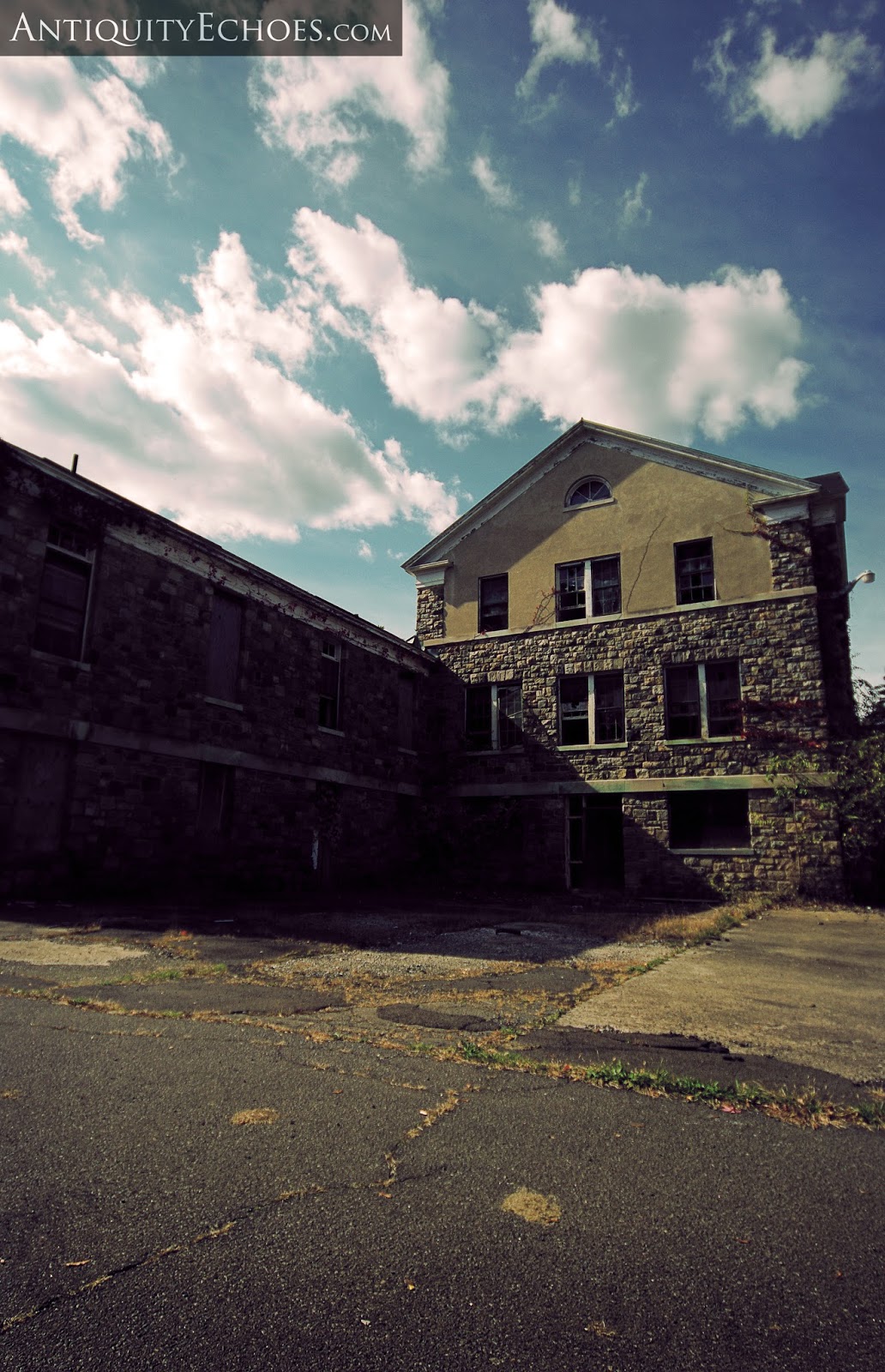The Disgrace of Letchworth Village
In 1909, New York opened a brand new
facility for the aid and housing of, as the literature declares, the
"feeble minded and epileptics" of that state. The new
facility was named for William Pryor Letchworth, a key player in its
creation, and a noted humanitarian of the time. In order to avoid
creating an institutional environment for the patients, the grounds
were arranged much like a college campus, with a multitude of
structures dotting the landscape. The buildings were relatively small,
typically not exceeding two stories in height, and were inspired by
the aesthetics of Greek architecture. Walls of carefully hand-cut
stone punctuated by arched windows and column-girded doorways could
be found at every turn. Short walks across grassy lawns separated the
buildings, and the greater campus, known as Letchworth Village,
housed its own power plant, farmland, waste disposal and water
supply. It was the first of its breed - A village-styled hospital
center that was all-inclusive and could operate completely isolated
from the outside world.
 In addition to serving as a mental asylum,
the facility was used for medical research, most famously the
development of the polio vaccines used in the Congo by Dr. Hilary
Koprowski. Twenty 'mentally deficient' inhabitants of Letchworth
served Koprowski as the first humans to be injected with the
vaccine.
In addition to serving as a mental asylum,
the facility was used for medical research, most famously the
development of the polio vaccines used in the Congo by Dr. Hilary
Koprowski. Twenty 'mentally deficient' inhabitants of Letchworth
served Koprowski as the first humans to be injected with the
vaccine.The gradual decline of Letchworth began with overcrowding. Along with many United States psychiatric hospitals, the 1950's through the 1970's saw a huge increase in patient population, well beyond those for which the facility was designed. A documentary, entitled "The Last Disgrace", focusing on the sad condition of these hospitals by the then-local reporter Geraldo Rivera brought the situation at Letchworth into the public eye. While the exposé focused primarily on the deplorable conditions at another New York asylum, Willowbrook, Letchworth was featured in a substantial segment. When ABC aired his work, titled "The Last Disgrace", it resulted in massive public outcry. This trend, coupled with a shift toward mental care on a smaller scale, resulted in the slow redistribution of Letchworth's patients to other locations. In 1997 the last of the residents were relocated, and the village's long-running independent utility grid was shut down forever.
In researching this location, we have
found that even a passing mention of its name is bound to bring out
ghost stories. Abandoned places, especially asylums, are a frequent
object of attentions of paranormal investigators, and Letchworth
seems to be a particular favorite. Though we, ourselves, would be
considered “skeptics” when dealing with the supernatural, and do
not typically engage in “ghost hunts”, we are not opposed to such
activities. That said - We do take issue with the manner in which
more and more so-called “paranormal investigations” are
performed, wherein the investigators treat an abandoned location as a
giant nighttime playground to run through with a digital audio
recorder and a case of beer. Sadly, we find that television shows on
the subject have only helped to promote this attitude. What this
viewpoint lacks, primarily, is respect - Respect for people who lived
and died here, but more importantly, for the people who endured lives
of unimaginable isolation and pain, tormented by the demons of their
own minds that the medicine of the era was helpless to cure.

The doors along this upper floor hallway slam open and shut all day long from the wind.
Hydrotherapy tubs stored in a large chamber under the power plant.
Looking upward from within the old power plant stack.
The cemetery markers bear only numbers.

This is an older video of ours. When watching, you may notice that it has a different "feel" to it than our current-day films. This is because the style of our cinematography has progressed over time, and our equipment has changed and improved throughout the years. We have chosen to leave our older videos available for viewing online to illustrate the evolution of our work.

William Pryor Letchworth
















































